Well, "lazy" it is difficult to call it, you will have to work, but it is what the result is what! Solid exclusive!
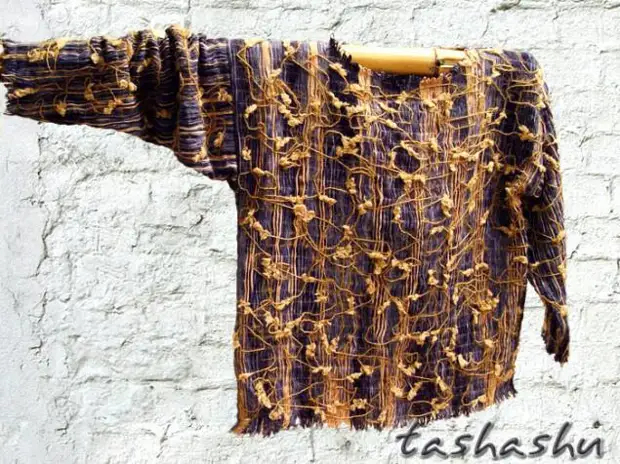
No time to knit? And with sewing "on you"? Then the technique "Crazy Wool" is what you will be interested. With this technique, the expenditure of yarn on the sweater decreases in 4-5 times (for example, in my hamster stocks, the remains of the yarn are full. It seems to be sorry, and you will not tie anything).
And also, this method is salvation for people, with increased skin sensitivity (to those I have a misfortune
The author of this technique Jeannet Knaka. A couple of years ago I came across her books, and, by my way to dry everything that belongs to the needlework, they bought them. The technique is very interesting, but the purchase of books turned out to be a connoisseur, because the principle of the manufacture of all things one could have been read in the store, I would not miss anything).
The basis of the whole process is a water-soluble fliesline and a glue-spray of temporary fixation. The patterns used primitive, as when knitting, although, in principle, it is possible to make things of any complexity of cut. Janet recommends laying the yarn between two layers of water-solving, but I don't really like "holes" between threads, so I laid the threads on silk (not necessarily to use silk, you can upload on any fabric, but it is more pleasant to wear silk))). The fabric has shown in chalk on Smooth stripes so that when you layout the yarn, it was possible to navigate and not to twist the rows. Then the cloth sprinkled with spray and put the rows of yarn (it is possible in the artistic disorder, but in this work I made rows). Carefully with a spray - he strives to put "blots" on silk, then they are not abandoned. I tested various types of glue, I did not notice a big difference. You can upload immediately on the cut pattern, this will save the fabric, but add headaches with edges (zigzag or overlock treatment). In this model of the edge, I cleaned the knitted patchwork.
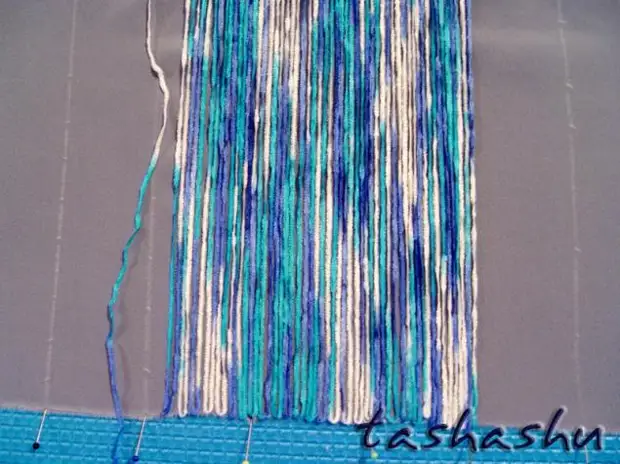
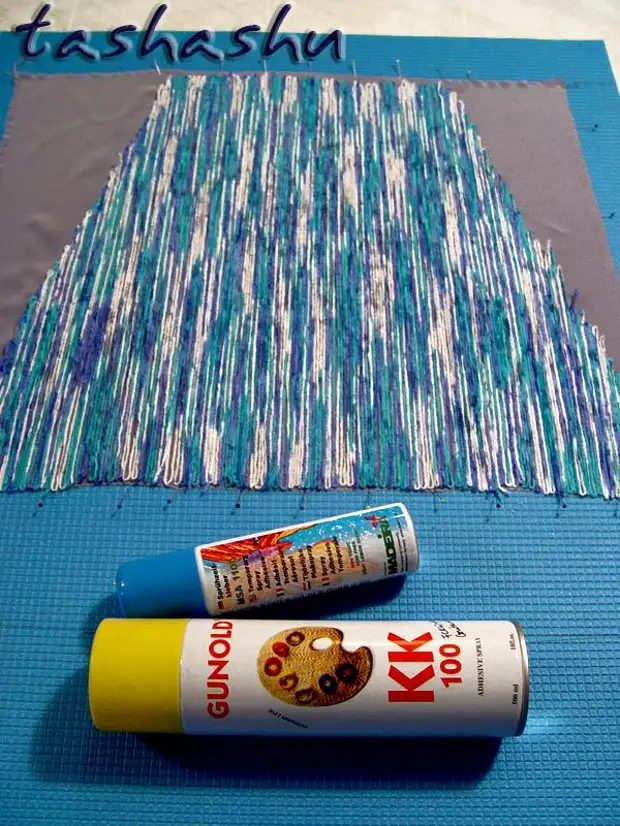
Silk is very slippery, so that the fabric does not move, I pulled it with a pins on a tourist foam.
From above, once again sprantered by spray and pressed a water-primary. I was drawn in advance with a simple pencil, outlined future lines.

The whole "design" secured the pins. The spray is not in vain called "temporary", the effect of gluing is pretty quickly reduced and, in the process, the flieseline is held mainly on the pins. We have "Sandwich": Fabric - Yarn - Water-soluble Flizelin.
Started on a typewriter on a predetermined lines across the rows of the yarn.
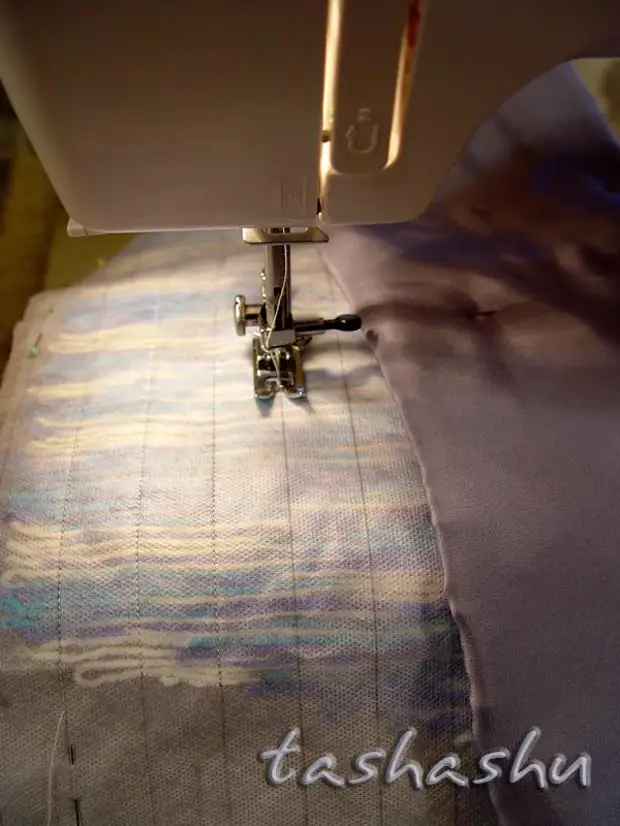
On the finished canvas (silk exhaust), chalk drew a pattern and paved the line along it, then cut the edges and zigzag.
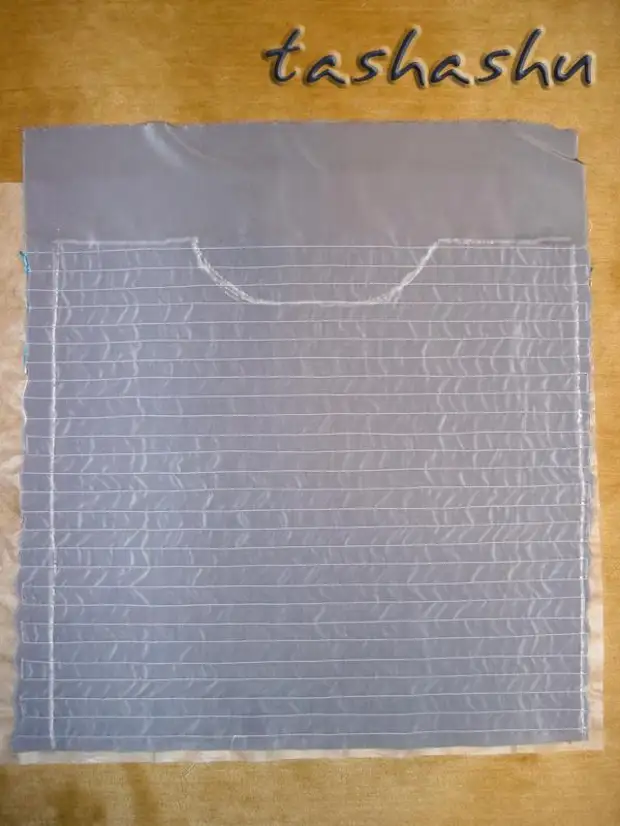
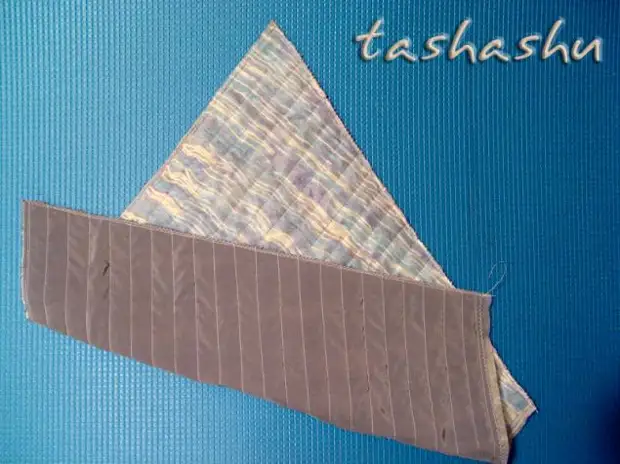
Dissolved fliseline with water. It is better to soak for a while, and then rinse under pressure.
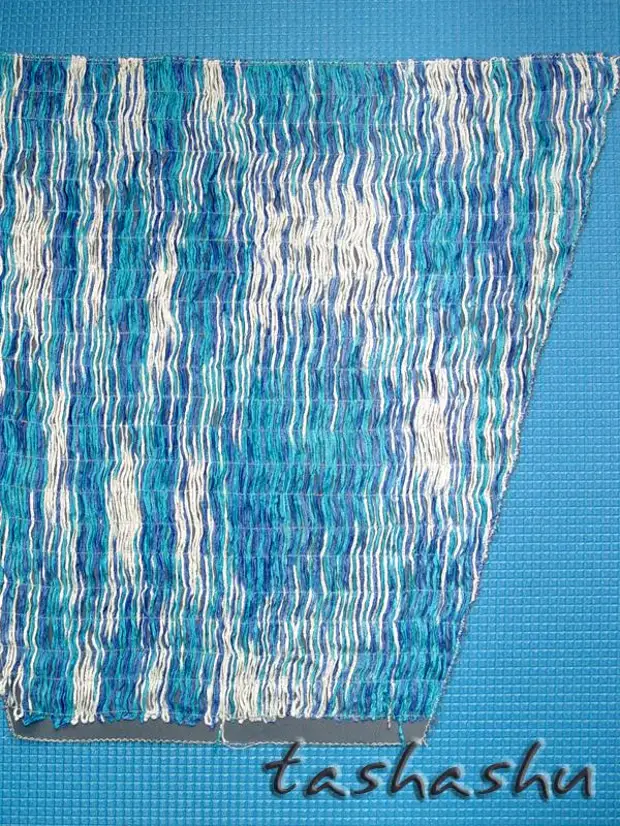
Here, in fact, all). The sweater is stitched. In this model, the edge is decorated with knitted patchwork, and cuffs and collar - rubber band.
Oh, still, I almost forgot ... It is always very difficult to perfectly gently sew a knitted part to the fabric. It used this method: on the tissue, along the connection with a future knitting, first paved a large machine line, and then, already on it, with the help of the hook, the first row of knitting was gaining. Further knits as usual. The connection location is very neat. And with the inside, it is convenient to link a small plank with the same method; From the same line (exhaust) to dial loops and penetrate a couple of centimeters, close the loops and climb to the main collar. So on the wrongness gently hid a cut of a cloth.
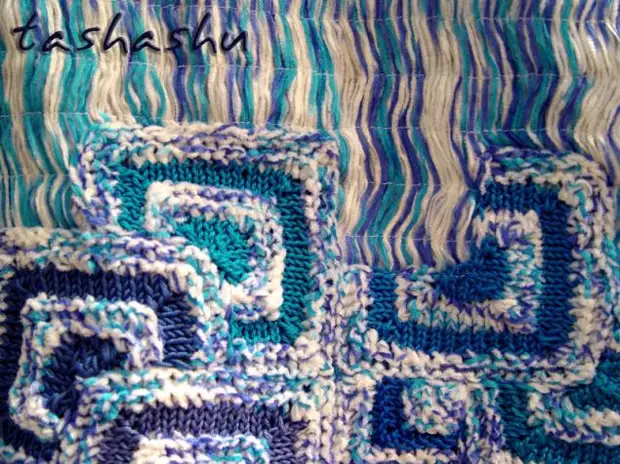
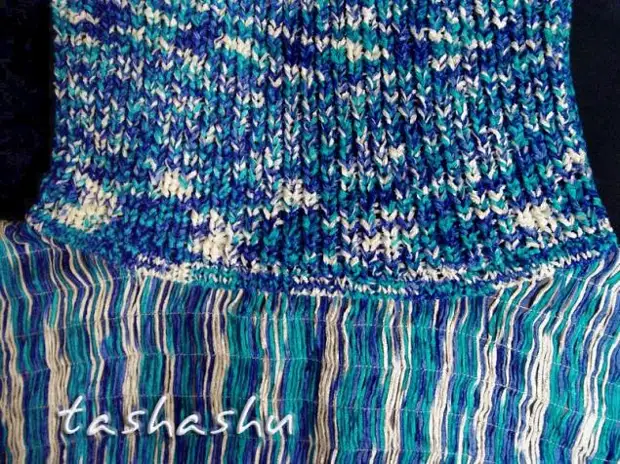
And it's easier to do without knitting
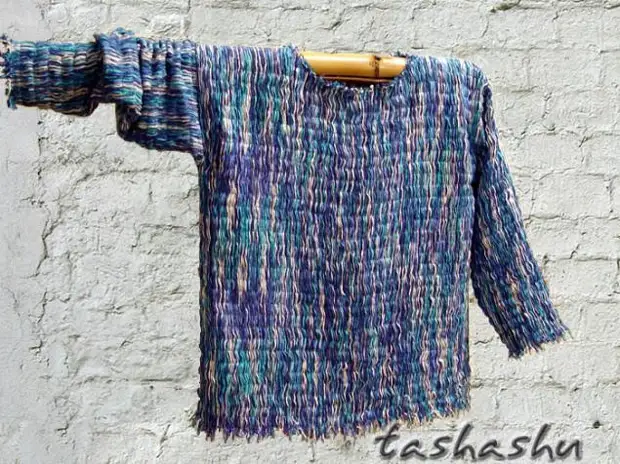
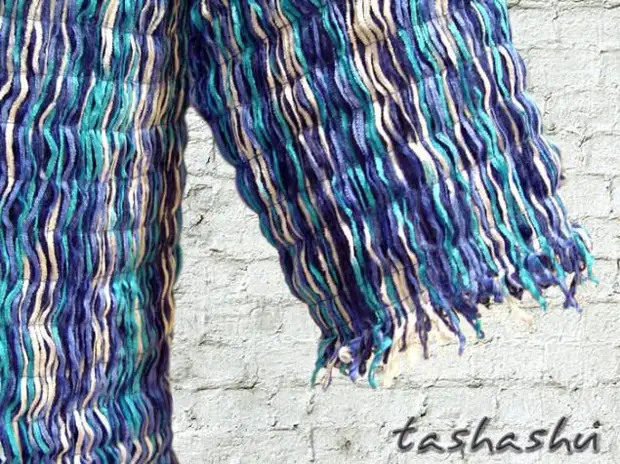
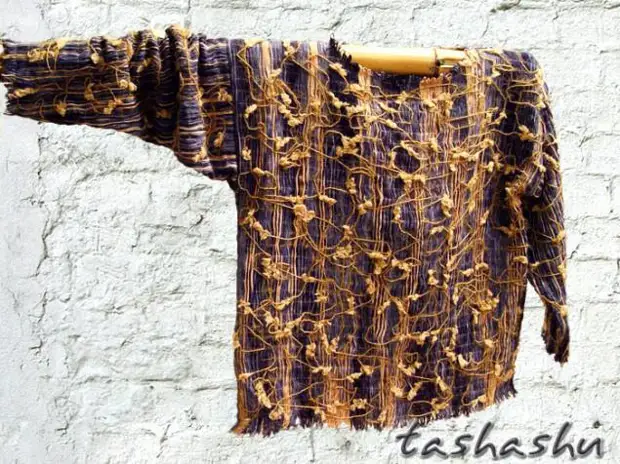
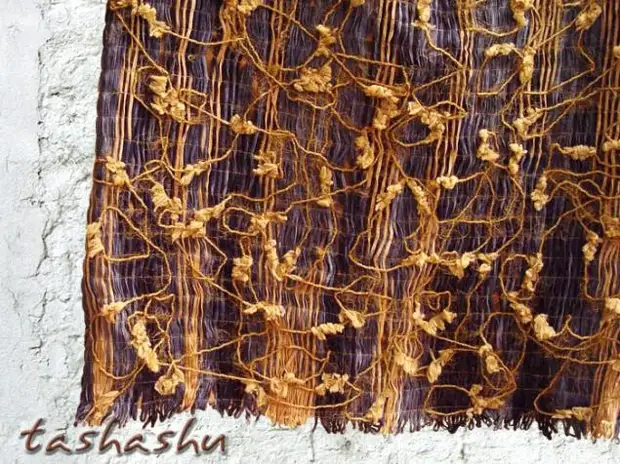
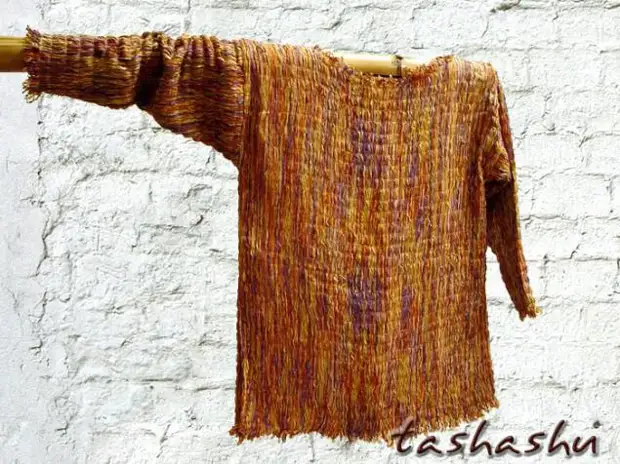

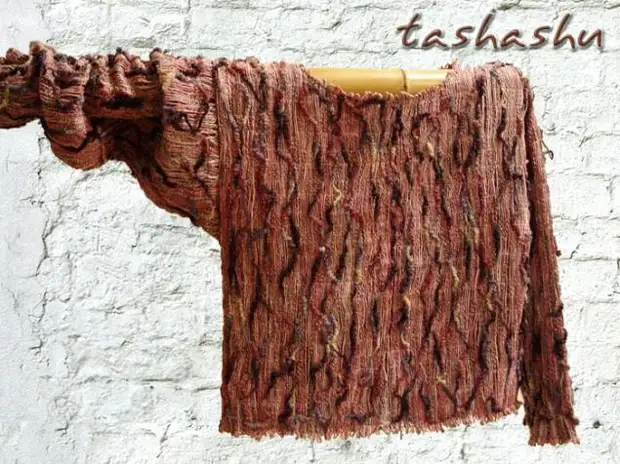
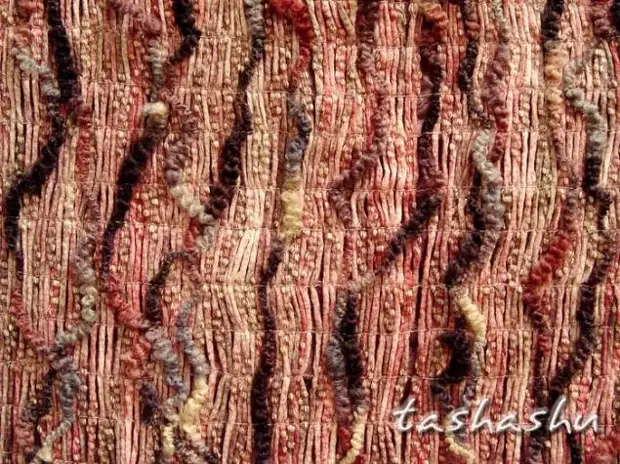
The author of the article Tashashu (Svetlana)
A source
